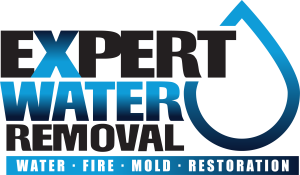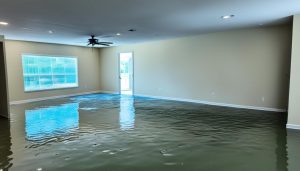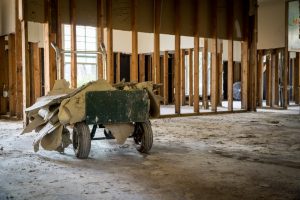Ever wondered if water-soaked walls, furniture, and floors can be fixed? The answer is yes and no. Water damage can often be fixed, but it depends on how fast you act and how bad the damage is. Quick action is key to avoid permanent damage and mold growth, which are harmful to health and costly to fix.
Water damage can range from small leaks to big disasters like sewage backups. Experts use special tools to dry, clean, and sanitize damaged areas. While many cases can be fully fixed, some damage, like structural issues or heavy mold, might need big repairs or even a full rebuild. Knowing how to handle water damage is crucial to avoid big costs and problems.
Key Takeaways
- Category 1 water damage involves clear water from sources like rainwater and leaking pipes, costing roughly $4 per square foot to mitigate.
- Category 2 encompasses gray water from broken appliances or overflowing toilets without solid waste, with mitigation costs around $8 per square foot.
- Category 3 damage involves contaminated black water and generally requires extensive and expensive remediation efforts.
- Water mitigation costs range from $1,300 to $5,200, influenced by damage type, extent, and building size.
- Restoration can be costly, ranging from a few hundred dollars to up to $100,000 depending on repair scope.
- Maintaining indoor humidity below 60% reduces mold growth risks, protecting your home from further damage.
Understanding Different Categories of Water Damage
Water damage is divided into three main categories based on how contaminated it is and the health risks it poses. Knowing these categories is key to fixing water damage right.
- Category 1 Water Damage: This is water from clean sources like rain, melted ice, or burst pipes. Category 1 water is safe at first but can become contaminated if not treated. This could turn it into Category 2 or 3.
- Category 2 Water Damage: This is called gray water. It’s more contaminated and can make you sick if you drink it. It comes from things like washing machines, dishwashers, and toilet overflows with urine. It’s important to fix Category 2 water damage fast to avoid health problems.
- Category 3 Water Damage: Known as black water, this is the most contaminated. It has harmful germs and toxins. It comes from sewage backups and floodwaters. Fixing Category 3 water damage is urgent because it’s very dangerous.
Fixing water damage depends on its category. Category 1 might just need drying and cleaning. But Category 2 and 3 need deeper cleaning and special drying to keep you safe.
Remediation vs. Mitigation: Key Differences
Understanding the roles of water damage remediation and mitigation is key. These processes are vital for managing water damage. They serve different purposes but are both crucial.
Water damage mitigation involves quick actions to reduce damage after a water incident. Steps include assessment, water extraction, and drying. Professionals use pumps and vacuums to remove water fast.
They also dry and dehumidify to remove all moisture. This is important to prevent structural damage and mold. Sanitizing is also crucial, especially if the water is contaminated, to avoid health risks.
Water damage remediation comes after mitigation. It focuses on restoring the property to its original state. This includes cleaning, sanitizing, and deodorizing affected areas.
Steps also include structural drying and mold prevention. Damaged structures are repaired or replaced. This ensures the property is safe and ready for use again.
Timely action in both mitigation and remediation is crucial. Quick mitigation can prevent further damage and health risks. Timely remediation ensures a thorough restoration.
Professional help is recommended for both processes. Companies like Expert Water Removal have the expertise to help properties recover. They play a big role in successful recovery.
Remediation and mitigation work together. Mitigation is the first step to stabilize the situation. Remediation then fixes the root causes and restores the property. Together, they ensure properties are safe and ready for use again.
Can Water Damage Be Reversed?
Reversing water damage needs quick action and a clear plan. First, stop the water and make the area safe. Fast action can make a big difference.
Next, dry and dehumidify the damaged area. Remove all water with pumps and fans. Use dehumidifiers to stop mold, which grows fast.
For serious damage, get professional help. Cleanup costs about $3.75 per square foot. But, gray or black water damage costs more.
Cleaning and disinfecting are key steps. This removes harmful bacteria and mold. Anti-microbial treatments are used here. You might also need to fix or replace damaged materials.
Restoring damaged items is part of the process. Many items can be fixed. But, some might need to be replaced.
Ignoring water damage can cause big problems. It can weaken structures and lead to pest infestations. Quick repairs are crucial to avoid these issues.
Homeowners insurance might help with repairs. Check your policy and talk to professionals about coverage.
In short, reversing water damage is possible with quick and consistent action. Professional help can make the process more effective.
Conclusion
Water damage repair and recovery depend on several factors. These include the type of water, how much damage there is, and how fast you act. Water damage can range from clean water to black water, each with its own challenges.
Signs of serious damage, like warped floors and mold, show why quick action is needed. These signs mean you must get help fast to fix the damage.
Getting professional help is often a must for water damage. They can check for structural damage, dry out areas, and fix things properly. This not only saves money but also keeps everyone safe.
Quick steps, like turning off water and drying areas, help prevent more damage. This is crucial in fixing water damage problems.
The success of fixing water damage depends a lot on how quickly you act. While small problems might be fixed by yourself, big ones need a pro. Acting fast helps fix your property better and faster.
Homeowners and managers who act quickly can handle the recovery better. They can also get the insurance to cover the costs. This way, they can get their property back to normal.








